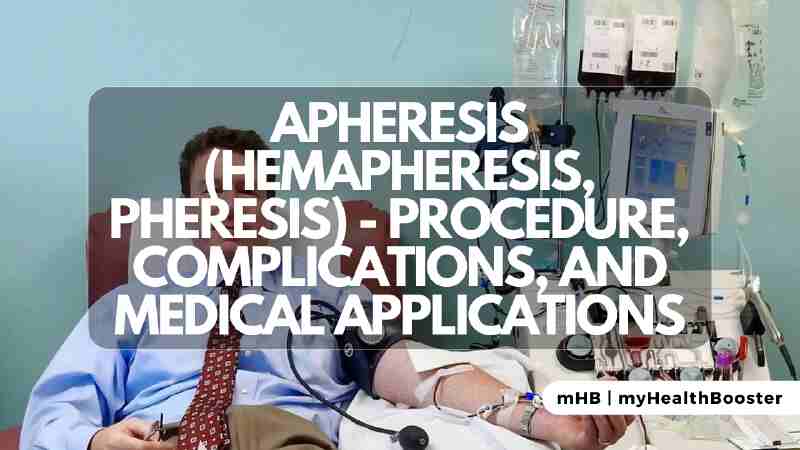Apheresis is a cutting-edge medical procedure designed to optimize blood components for various therapeutic purposes. Learn about the process, potential complications, and the range of conditions that can benefit from this innovative treatment, also known as pheresis or hemapheresis.
What is Apheresis?
Apheresis, synonymous with hemapheresis or pheresis, is a medical marvel involving the extraction of whole blood from a donor or patient. The blood is then meticulously separated into individual components, allowing for the removal of a specific targeted component. The remaining blood components are seamlessly reintroduced into the bloodstream, ensuring a comprehensive and precise medical intervention.
Apheresis serves dual purposes: the collection of vital donor blood components like platelets or plasma and the treatment of certain medical conditions wherein disease-provoking elements are selectively removed from the blood.
Types of Apheresis
Terminology may vary based on the blood component being targeted:
- Plasma (plasmapheresis)
- Platelets (plateletpheresis)
- Leukocytes (leukapheresis or leukopheresis)
- Lymphocytes (lymphopheresis or lymphapheresis)
- Red blood cells (erythropheresis)
Moreover, total plasma exchange, involving the removal and replacement of plasma with fresh frozen plasma, and the collection of stem cells from peripheral blood can also be achieved through apheresis.
How Apheresis is Conducted
The procedure involves directing the patient’s or donor’s blood through tubing to a specialized machine. This machine utilizes either a centrifuge or filtration process to separate blood components. The targeted blood component is then extracted, and the remaining components are reintroduced into the patient. The entire procedure is painless, lasting approximately two hours – only slightly longer than a standard blood donation.
Potential Complications of Apheresis
Serious complications are rare, with minor issues including temporary bleeding at the donation site and brief lightheadedness. For therapeutic applications, potential complications may include bleeding tendencies, increased susceptibility to infections, low blood pressure, and muscle cramping due to electrolyte imbalances.
Medical Conditions Treated with Apheresis
Apheresis proves invaluable in treating a spectrum of conditions, including but not limited to:
- Myasthenia gravis
- Waldenstrom’s macroglobulinemia
- Goodpasture’s syndrome
- Familial hypercholesterolemia
- Hyperviscosity syndrome
- HELLP syndrome of pregnancy
- Leukostasis in leukemia
- Elevated platelet counts in leukemia or myeloproliferative disorders
Additionally, apheresis is effective in cases of:
- Systemic lupus with life-threatening complications
- Severe vasculitis
- Polymyositis or dermatomyositis
- Severe rheumatoid arthritis
- Rapidly progressive glomerulonephritis
- Chronic autoimmune polyneuropathy
- High-risk solid organ transplantations with a potential for antibody-mediated rejection
Contraindications to Apheresis
Hemapheresis is generally avoided in cases of active infection, unstable heart or lung conditions, severely low white blood cell or platelet counts, bleeding tendencies, or significantly low blood pressure. Decisions are made based on the patient’s overall health status and the severity of the specific condition being treated.
Explore the transformative potential of apheresis, a revolutionary medical procedure offering tailored solutions for various health challenges.
References
- Fridey, Joy L., M.D. “Therapeutic aphresis (plasma exchange or cytapheresis): Indications and technology.” UptoDate. Updated Jul. 29, 2015
- Apheresis (Hemapheresis, Pheresis) – MedicineNet
